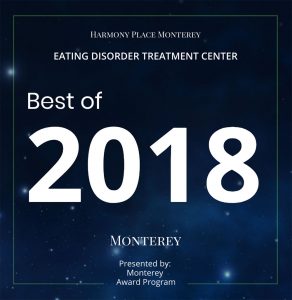Sexual Trauma Within the Context of Traumatic and Inescapable Stress, Neglect, and Poisonous Pedagogy by Mark F. Schwartz, Lori D. Galperin, and William H. Masters
Post-traumatic Stress
The Diagnostic Statistical Manual-Ill (DSM-111) defines posttraumatic stress disorder (PTSD) as the result of a recognizable stressor that would evoke significant symptoms of distress in almost anyone (American Psychiatric Association, 1987, p. 236). The implication of this terminology is that the natural response to such trauma is PTSD — that the response is not an “illness” and that any person experiencing an event of that magnitude is likely to be similarly affected. Thus, rather than stigmatizing trauma victims by assigning to them a mental disorder, it might be more reasonable to categorize the adaptive and maladaptive survival strategies, describe such individuals as “survivors” and then label the “pathological intensifications” (Horowitz, 1986) of such strategies as a mental disorder. the cycling of numbing and intrusion.
Because a child’s natural defenses include dissociation — even amnesia responses that predictably occur following posttraumatic stress (Horowitz, 1986) may continue to cycle indefinitely. The numbing portion of the cycle involves a person feeling like an object, treating others like objects, and responding objectively without the use of emotions to guide actions and without the capacity for genuine caring and compassion for self or others. Therefore, the numbing results in restrictive, self-punitive responses, as well as constriction, isolation, and disconnection from others.

Photo by Rodion Kutsaev
Intrusion is the breaking through or flooding in of cognition or affects that overwhelms the individual.
Typically, it is coded as anxiety, depression, or some other generalized distress, such as somatic complaints. Ritualized or compulsive behavior is often used to cope with this distress or to numb out further, which adds to the individual’s disability. Specifically, when the intrusion phase begins, the compulsive behavior may function as a vehicle for the re-creation of numbness. When the numbing becomes intolerable (i.e., when the person feels so removed, inhuman, or unreal that all connection to self, others, and physical reality feels lost), compulsive behavior or rituals are then used to reestablish feeling. It is likely that without external guidance and support from caregivers, the result of early trauma will be pathological intensification or mental disorder. Thus, the impact of trauma can be measured only by assessing both event and context (i.e., the presence or absence of nurturing and support from the caregivers). With sufficient support, the trauma may be “finished,” “worked through,” or resolved without any resulting pathological intensifications.
Disorders of Extreme Stress (DES)
Whenever a person experiences severe and chronic stress that is inescapable for prolonged periods, the resulting syndrome is predictably different from that of a posttraumatic stress, which consists of an overwhelming acute event that has a termination point. There is also a vast literature reviewed by van der Kolk (1989) that suggests that the physiologic concomitants of chronic, inescapable stress are different from those for acute stress. For many children who experience PTSD, there is a backdrop of stress in the day-to-day atmosphere of abuse, neglect, and danger to which some children are subjected both in and out of their homes. Whenever children are afraid to walk into their homes because of chaotic, unprovoked, and inconsistent rage and hostility randomly projected onto family members, the environment can be considered similar to inescapable stress (DES).
Children who are chronically traumatized by their caretakers may have experienced similar to those of torture victims. For such children, witnessing molestation, seeing one parent beaten or raped by the other parent, being locked in hot cars on summer days, or almost being drowned in bathtubs culminates in a pervasive sense of unpredictability, danger, and terror. Whenever such episodic posttraumatic stress occurs in the context of this pervasive, overwhelming, chronic stress, the long-term effects will be much more devastating. Judith Hennan (1992) and Bessel van der Kolk (1993) have recently reviewed the existing literature and suggested that the distorted survival strategies that result from inescapable stress in humans include, predictably, depression and anxiety; somatic symptoms; dissociative symptoms; compulsive reenactment; susceptibility to revictimization; intimacy and relationship disorders; and some personality adaptation in the borderline, narcissistic, antisocial, or schizoid realm.
If children believe that they are in mortal danger and that the threat is embodied by the people on whom they are most reliant, the result is a feeling of such profound powerlessness that any will to continue is totally eradicated. Therefore, resilient children bounce back through an instinctive reframing of their environments that restores hope: They conclude that they are bad and have caused their own suffering, that their caregivers truly love them, and that if they can only try harder — or be better everything will change. To wit: They are not without love and need only perfecting to be truly deserving.The shame and isolation of “the secret” often compound and reinforces these dynamics. When the secret is sexual abuse, children often have been told an array of confusing lies: “I love you best of all.” “This is our little ‘If your mother knew, she wouldn’t love you, she would know you’re a bad little girl,” and so on. These secret.’ confusional techniques occur together with the disorientation of overwhelming, incomprehensible stimulation, which is often accompanied by excruciating physical pain. The mood of the torturer changes radically from one moment to the next: A kiss on the cheek follows a pillow over the face that nearly ends life. The isolating shame and secrecy further reinforce dependency on the torturer: “You’re my special one.’ “If anyone else knew, they would hate you, but you’ll always have me.’
The longer the abuse continues, the more bound to the abusers the children feel and the more removed they become from other potential connections. The longer the abuse continues with no intervention, the more certain children become that they are not worth saving. Our culture is one in which adults are deemed more aware and knowledgeable than children. Mothers, in particular, seem to know things magically that children think are unknown. Likewise, the God of Western culture is considered to be all-knowing — even Santa Claus has inside information and knows if you’ve been bad or good. Amid all of these mythologies and belief systems, how can children imagine that no one notices? When intact, a parent’s position is in some measure a buffer or insulator between the child and the dangers of the world. A child being abused by his or her father can have one of two beliefs about his or her mother: ‘She knows but I’m not worth saving” or, “She doesn’t know and I have absolutely no one capable of protecting me.” Again, it becomes more acceptable to feel bad and unworthy than at the mercy of all the world’s dangers. The net effect of the required adaptations to this array of implicit double binds is comparable, in essence, to those arising from intentional brainwashing. The process is the same: Bonds are severed, disorientation is engendered by deprivation or overstimulation, confusion is engendered by double messages and contradictions without resolution, and dependency on the torturer for the cessation of the suffering is implicit.
This result may be intended or merely a by-product of domestic cycles of ABUSE! and neglect, but the damage is of at least comparable and perhaps greater magnitude in domestic circumstances because the children’ s/prisoners’ ego formation is still unfolding and parents’ access to the children in total. Virulency of trauma is increased by factors such as premeditation, maliciousness, and the possibility of recurrence.
For child victims, chronic, learned helplessness often renders them targets for further victimization throughout life.
For natural disaster and kidnap victims, as well as POWs, there is the hope that one day the experience will end. There may be the remembrance of a time of normalcy or happiness. However, for the child victim of domestic violence, this is the reality as far as the eye can see — both backward and forward. For child victims, even when the abuse stops, the cycle often does not because the chronic, learned helplessness still renders them targets for further victimization throughout life. Their capacity to say “No” seems to be permanently injured. Initially, there are cycles of protest, despair, and apathy (Bowlby, 1969) until apathy finally becomes a relatively constant state and the individual succumbs.

Photo by Emiel Molenaar

Photo by S S
Neglect
Alice Miller (1983, 1986) has written about the hidden cruelties of our philosophy and practice of child-rearing as a society — what she calls poisonous pedagogy. Underlying such philosophies is a belief that children are impulsive, out-of-control creatures who require discipline to rein them in and civilize them. Instead of recognizing their acting-out behavior as the result of not feeling loved, attended to, and nurtured, parents assume that the behavior is a result of “badness.” Therefore, they feel entitled to punish, deprive, neglect, or scream at.
“And there is a big part of you in me now. I’m struggling to get rid of it; it is a lot like exorcising a demon — except that you in me is like an implosion of blackness more than an explosion of rage. Oh yes, when your personality surfaces in me, I become punitive, paranoid, critical, and blaming. All I feel is hate and fear. But when that passes, I’m left with a black hole, devoid of feeling. I’m empty, an emptiness that is palpable and painful. It’s a blackness I can ‘t describe. It is as if my knowledge and duplication of your horror are robbing me of who I really am. I, the real person, the person who been lost for so long, is missing. And sometimes it feels that if I can ‘t rescue her soon from that void, she’ll be lost forever.”
In this quote, she is able to articulate powerfully the core of her self-hatred. She despises her mother and despises herself for internalizing and absorbing aspects of her mother.
Harmony Place is located within the vicinity of Monterey. Here at Harmony Place, we know how hard it is to start the road to recovery from sexual trauma. Our medical team and staff have many years of experience with helping countless of people with trauma therapy and PTSD treatment while having compassion and patience for those recovering. We have many services to cater to each individual in regards to their lifestyle and budget.
Contact us today for further information over our services and see which one fits for you or a loved one. Don’t think you are alone; we are here to help you on your road to recovery.





